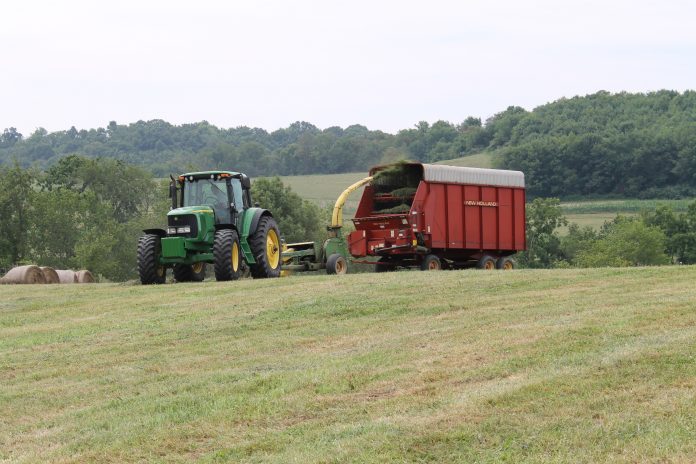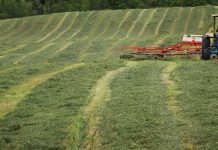While nitrogen prices have significantly come down it is still a significant cost of corn silage production. Not only does nitrogen application rate have a significant effect on corn silage yield but also affects crude protein concentration and concentration of other minerals.
For corn grain production Ohio uses an economic model, maximum return to nitrogen, MRNT, which looks at the price of corn and nitrogen to determine the most economical nitrogen rate. With a nitrogen cost of $0.75 per pound and a corn price of $5.75 per bushel, the MRNT for continuous corn is 181 pounds of nitrogen per acre. While corn silage does remove more nitrogen per acre than corn grain, it doesn’t need more nitrogen to maximize yield since both crops need the same amount of nitrogen to grow.
The most recent corn silage nitrogen rate research was conducted at the University of Tennessee but it matches older research done in Ohio, Wisconsin and New York. These studies all show no statistical yield increase in corn silage yield when nitrogen rates are over 180-200 pounds of total nitrogen application per acre. There was a slight continual increase with higher nitrogen rates, but the 300-pound nitrogen treatments only yielded one ton more than the 200 pounds of nitrogen treatment, which not only was not statistically significant it also was not economical.
The Tennessee study looked at nitrogen rates’ effect on the concentration of other nutrients. As nitrogen rates increased from 120-240 pounds per acre crude protein increased by 0.35% for each additional 30 pounds of nitrogen applied with a range of 6.4% to 7.7% crude protein.
Trend-wise the concentration of potassium, phosphorous, manganese and zinc per ton all increased with additional nitrogen applied. Copper and sulfur concentration per ton also increased significantly as more nitrogen was applied. The concentration of sulfur increased from 0.67 lbs per ton when 120 pounds of nitrogen was applied to 0.75 lbs of sulfur per ton when 240 pounds of nitrogen was applied. The copper concentration change was 4 ppm when 120 pounds of nitrogen was applied to 5 ppm with 240 pounds of nitrogen.
This study also found that when fields had a history of manure, both macro and micronutrient concentrations per ton were higher than fields with the same soil test levels and only a history of commercial fertilizer. Showing a benefit to utilizing manure on your silage fields.
When calculating nitrogen rates for corn silage it is important to include all nitrogen sources you are applying. Both spring and fall-applied manure can provide some nitrogen to your corn crop. The spring-applied manure will provide more nitrogen than the fall-applied manure. It is important to have a manure test each year to know how much nitrogen you applied per acre and in what forms it was in.
The ammonium-nitrogen in your manure is volatile and at risk of losses if not incorporated into the soil, which is also one of the sources of manure odor. When spring-applied solid or liquid manure is incorporated at application 95% of the ammonium nitrogen is available for your crop but this value may be lower if your incorporation tool leaves some of the manure on the soil surface. When incorporation occurs two days later, the amount of nitrogen available falls to 25% for solid manure and for liquid manure 55% when the temperature is below 50 degrees F or 40% at warmer temperatures.
Nitrate nitrogen should all be available for your crop but is at risk of leaching during heavy rainfall events as nitrate nitrogen can bind to water and move with it. The organic portion of the nitrogen is much more stable in the soil but also acts as a slow-release nitrogen product. For organic nitrogen, 40% will be available for this year’s crop, 20% for next year’s crop, 10% two years from now and an additional 5% the third year after application. Calculating the residual nitrogen from organic sources is beneficial in fields with continuous yearly manure applications.
Another useful option for nitrogen management with manure is to utilize the pre-side dress nitrate test around the V6 corn growth stage. When nitrate levels are greater than 25 ppm there is enough nitrogen for the crop. Results between 21-25 ppm are likely to have enough nitrogen unless weather conditions lead to high losses. Nitrate levels below 20 ppm will respond to an additional nitrogen application.













